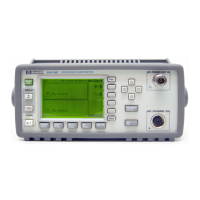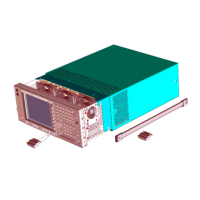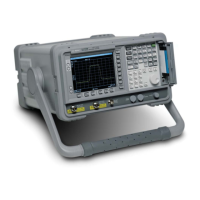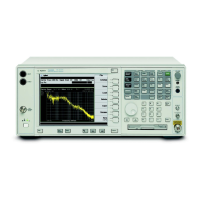Power Meter Operation
Making Measurements using Frequency Dependent Offset Tables
2-30 Agilent E4419B User’s Guide
Making Measurements using Frequency Dependent
Offset Tables
This section describes how to use frequency dependent offset tables.
Frequency dependent offset tables provide you with a quick and
convenient method of compensating for your external test setup over a
range of frequencies. Note that when selected, frequency dependent offset
correction is IN ADDITION to any correction applied for sensor frequency
response.
The power meter is capable of storing 10 frequency dependent offset tables
of 80 frequency points each.
To use frequency dependent offset tables you:
1. Select the table to work on a channel. Refer to “Selecting a
Frequency Dependent Offset Table”, on page 2-30 for further
information. If you require to edit the table refer to “Editing
Frequency Dependent Offset Tables”, on page 2-32 for further
information.
2. Zero and calibrate the power meter. The reference calibration
factor used during the calibration is automatically set by the
power meter from the sensor calibration table (if selected).
3. Specify the frequency of the signal you want to measure. The
calibration factor/offset is automatically set by the power meter
from the sensor calibration table (if selected) and the frequency
dependent offset table. Refer to “Making the Measurement”, on
page 2-31 for further information.
4. Make the measurement.
Selecting a Frequency Dependent Offset Table
You can select a frequency dependent offset table for use by pressing
, , , or
. The “State” field indicates if any frequency
dependent offset tables are currently selected. The “Offset Tbls” screen is
displayed as shown in Figure 2-6.
System
Inputs
Tables Freq Dep Offset A Table Off On
HP4402.book Page 30 Thursday, November 30, 2000 1:39 PM
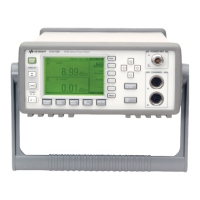
